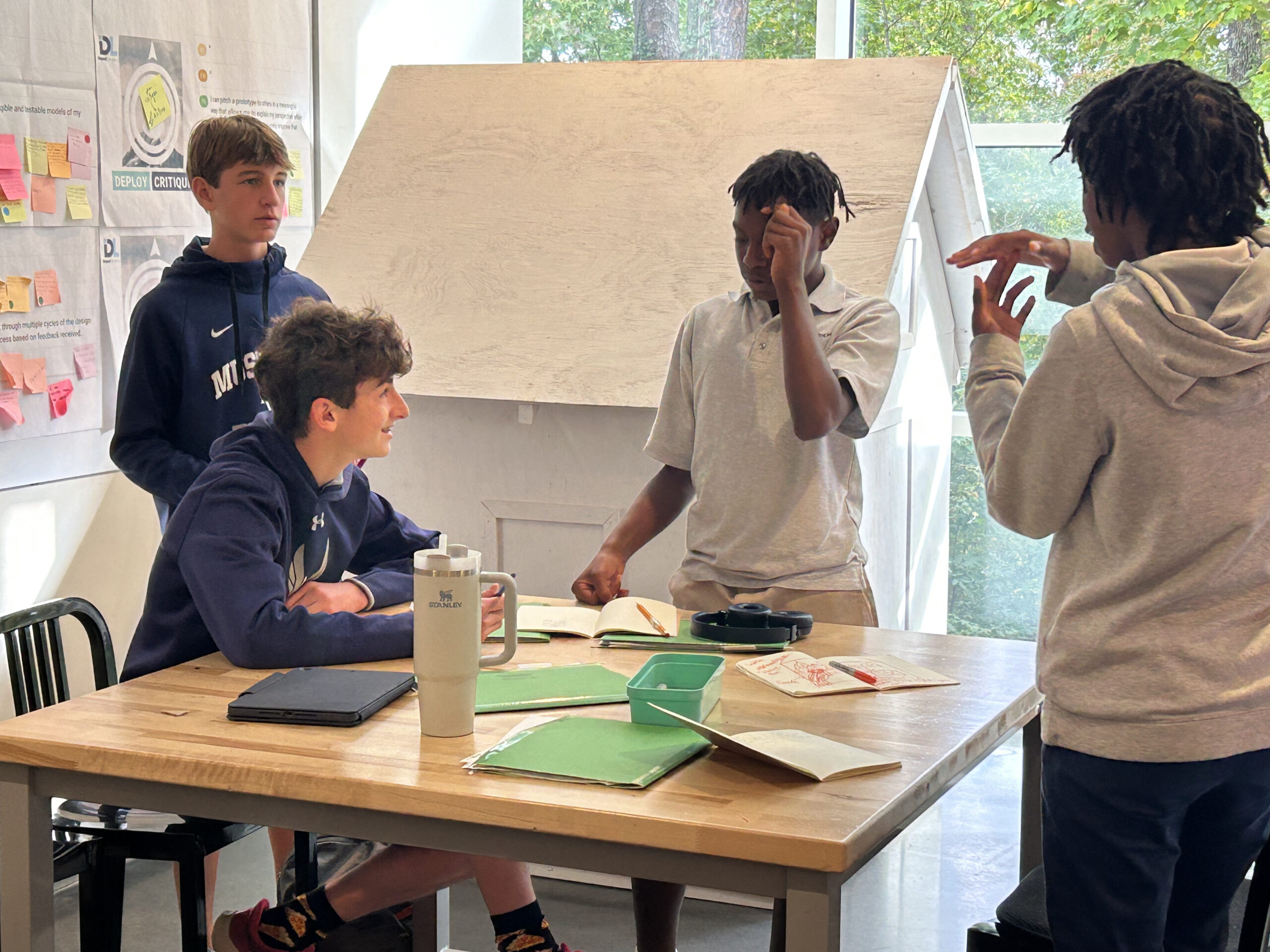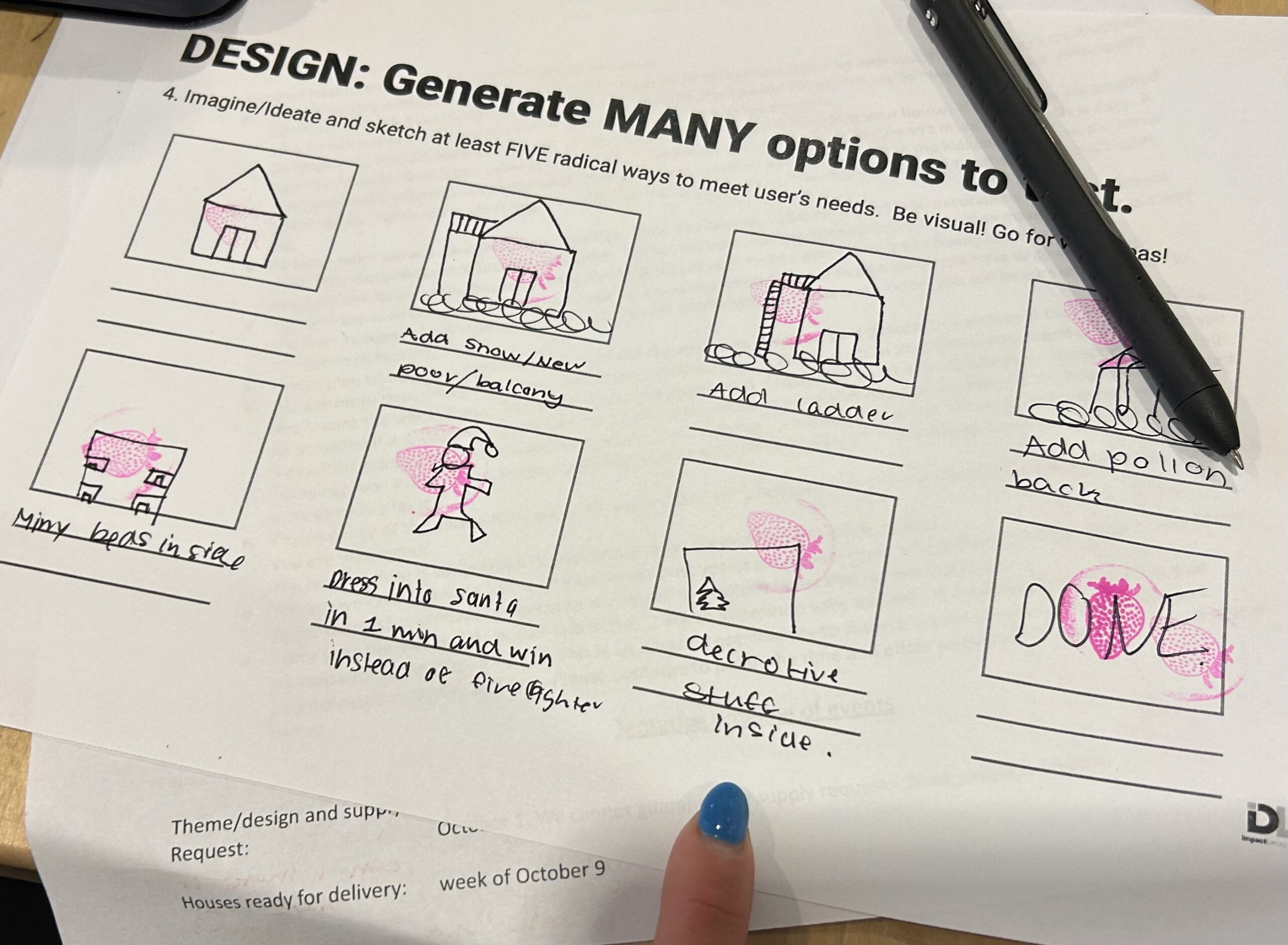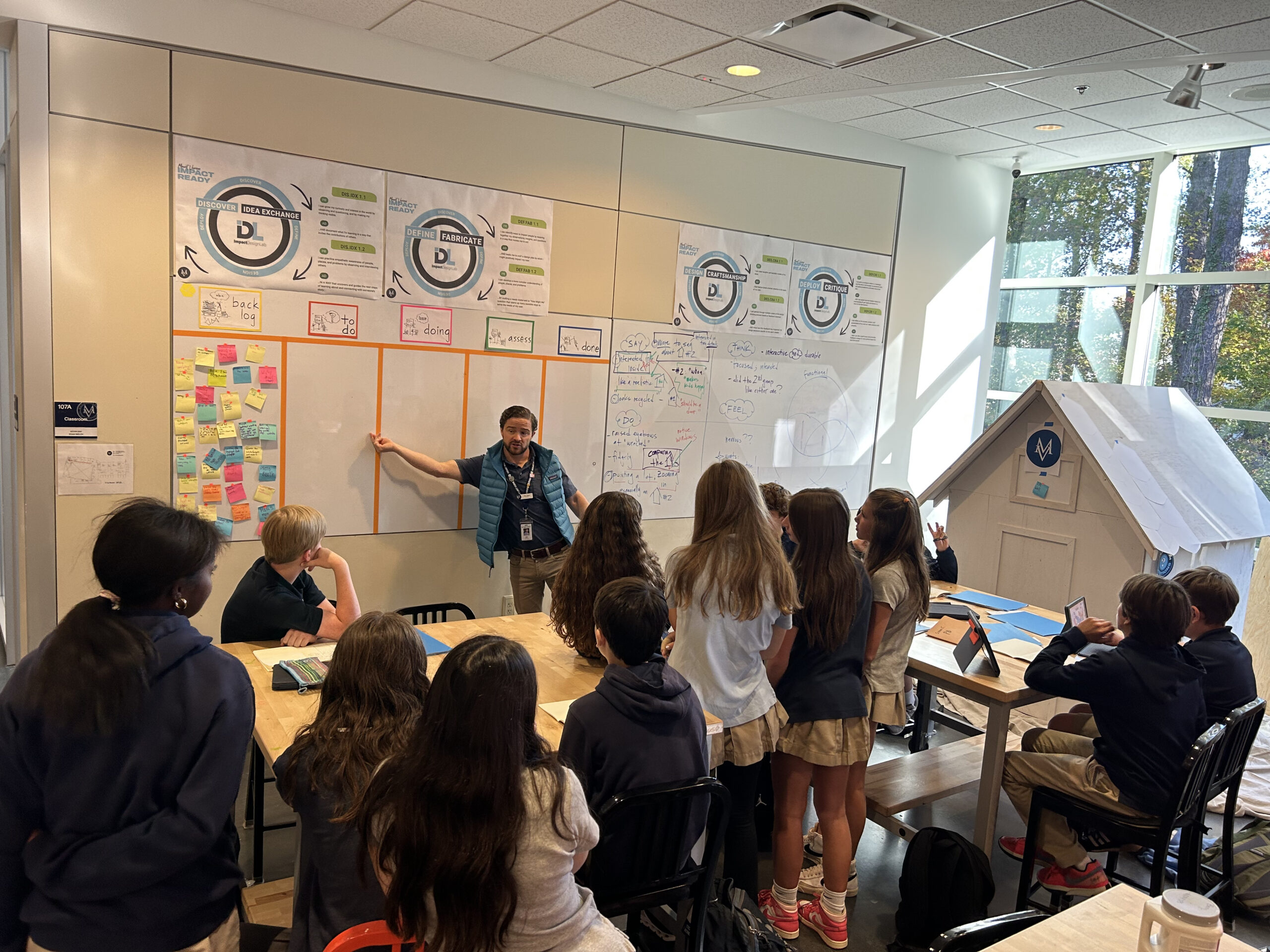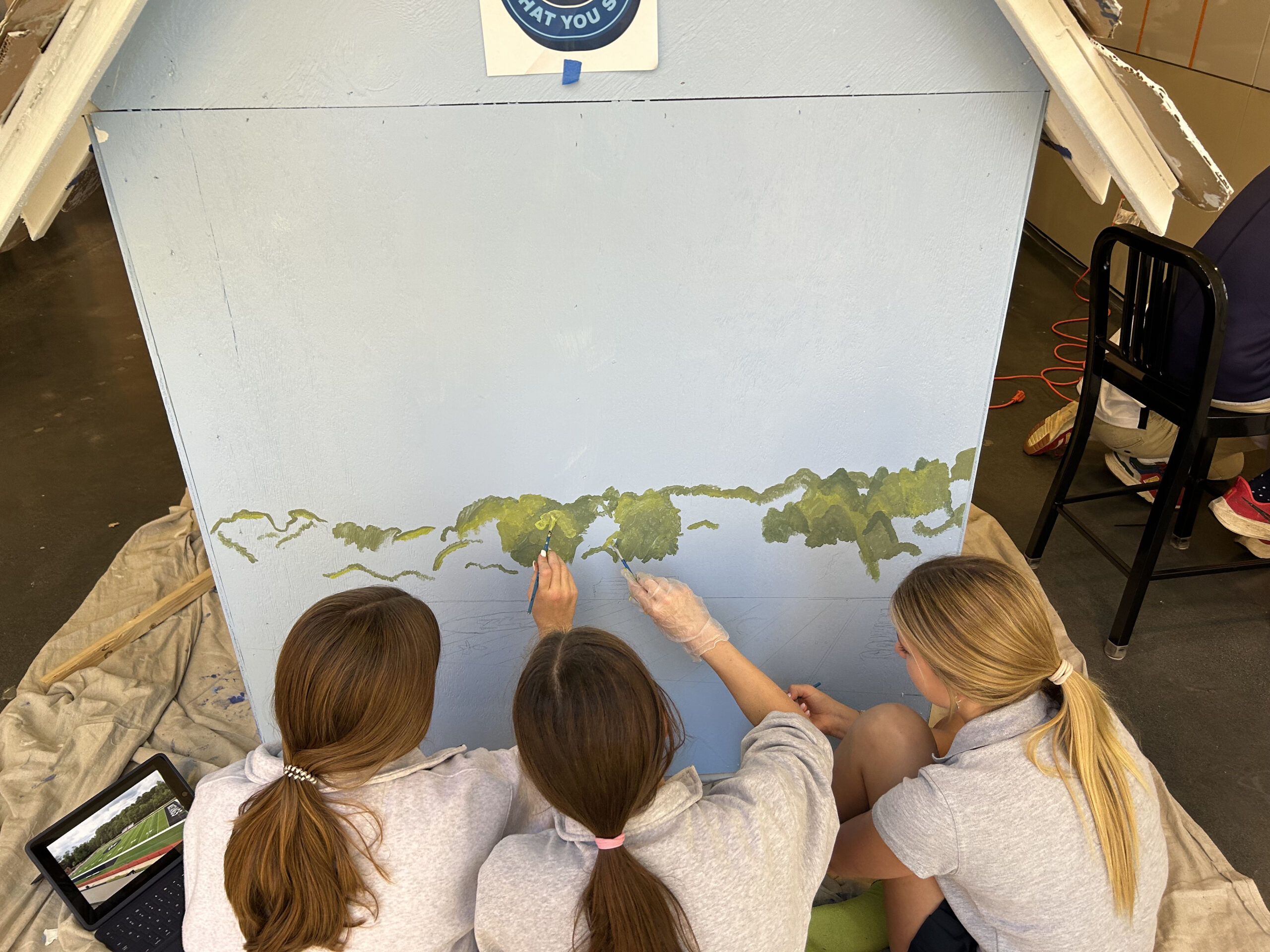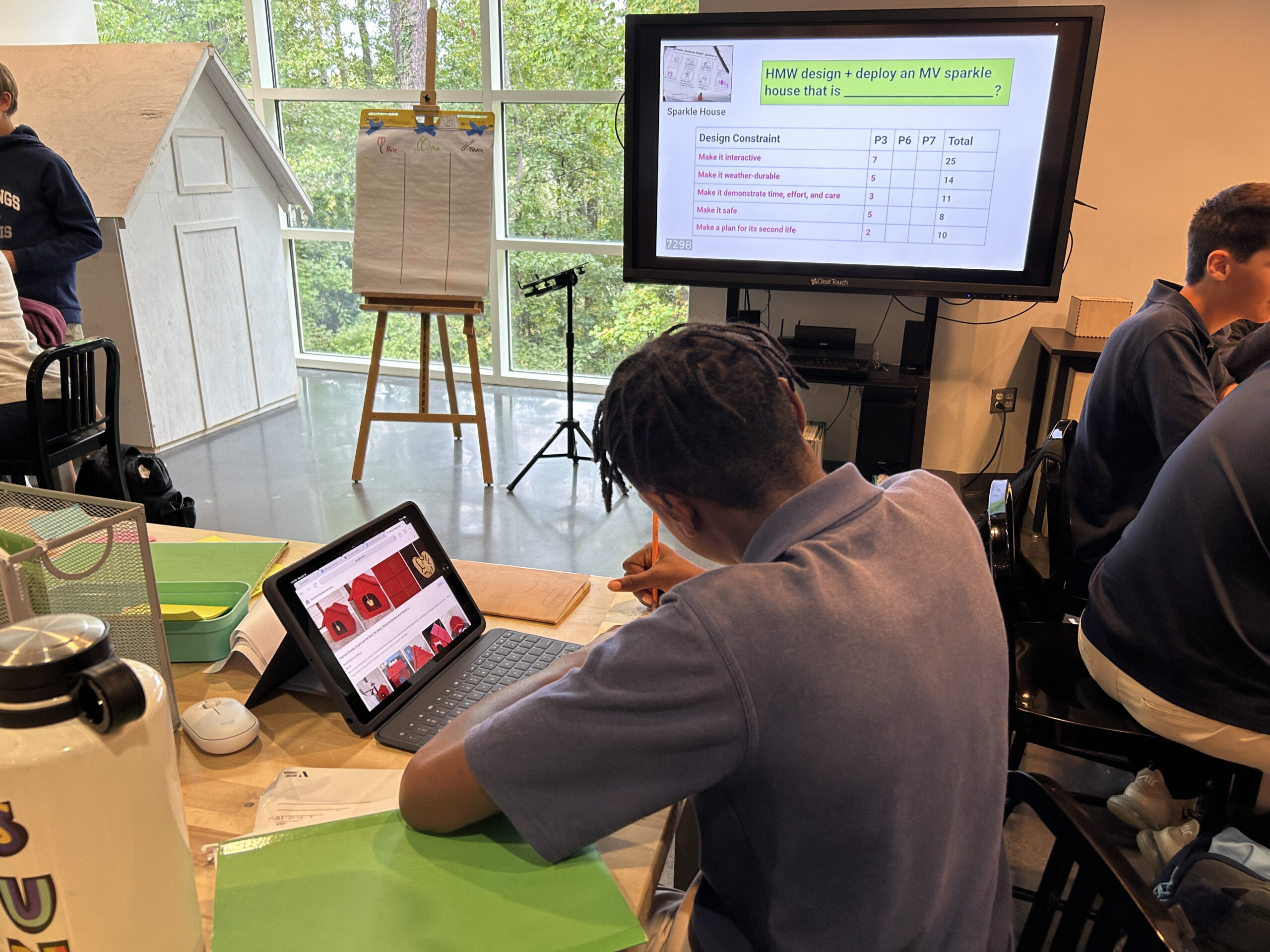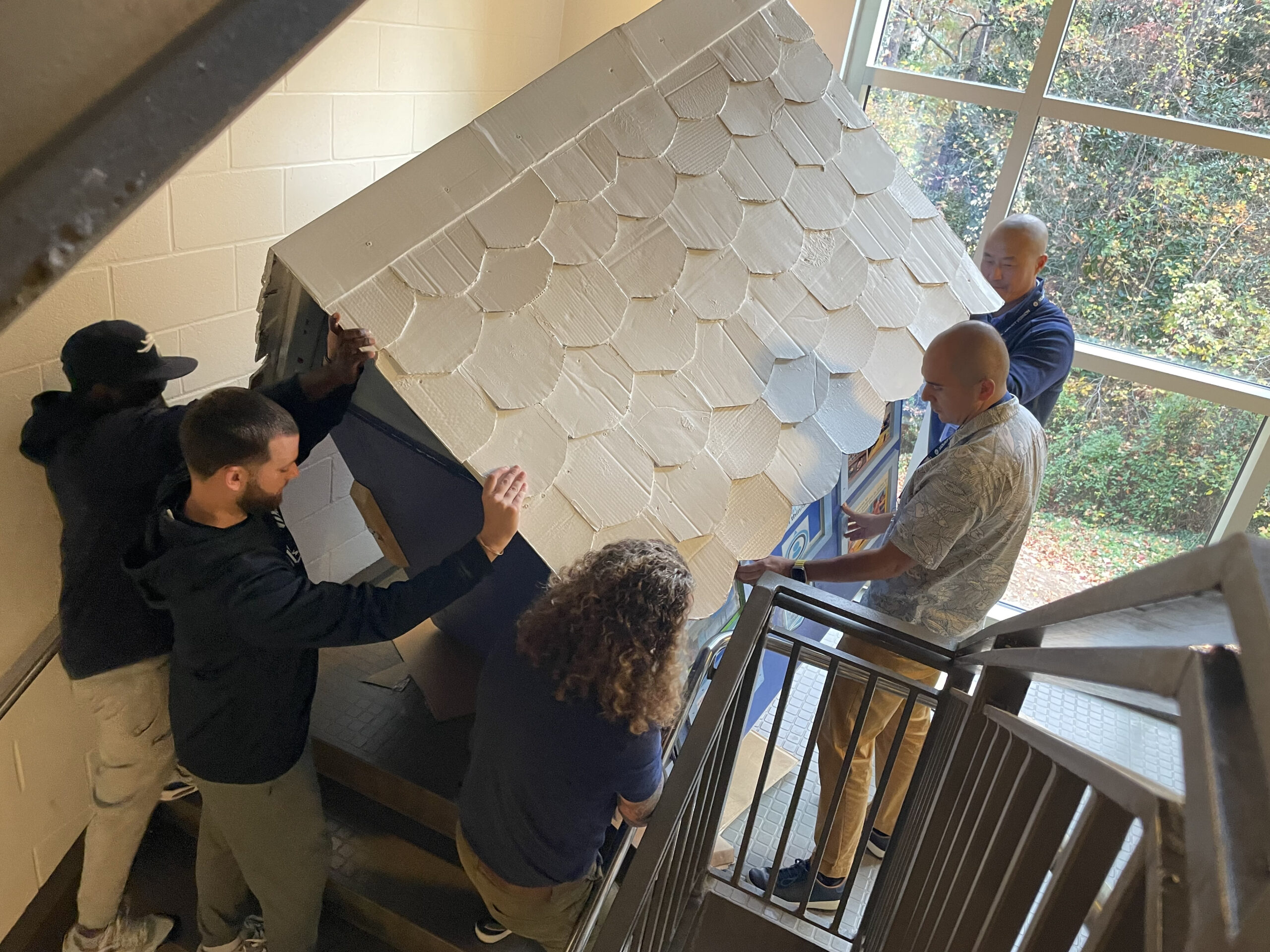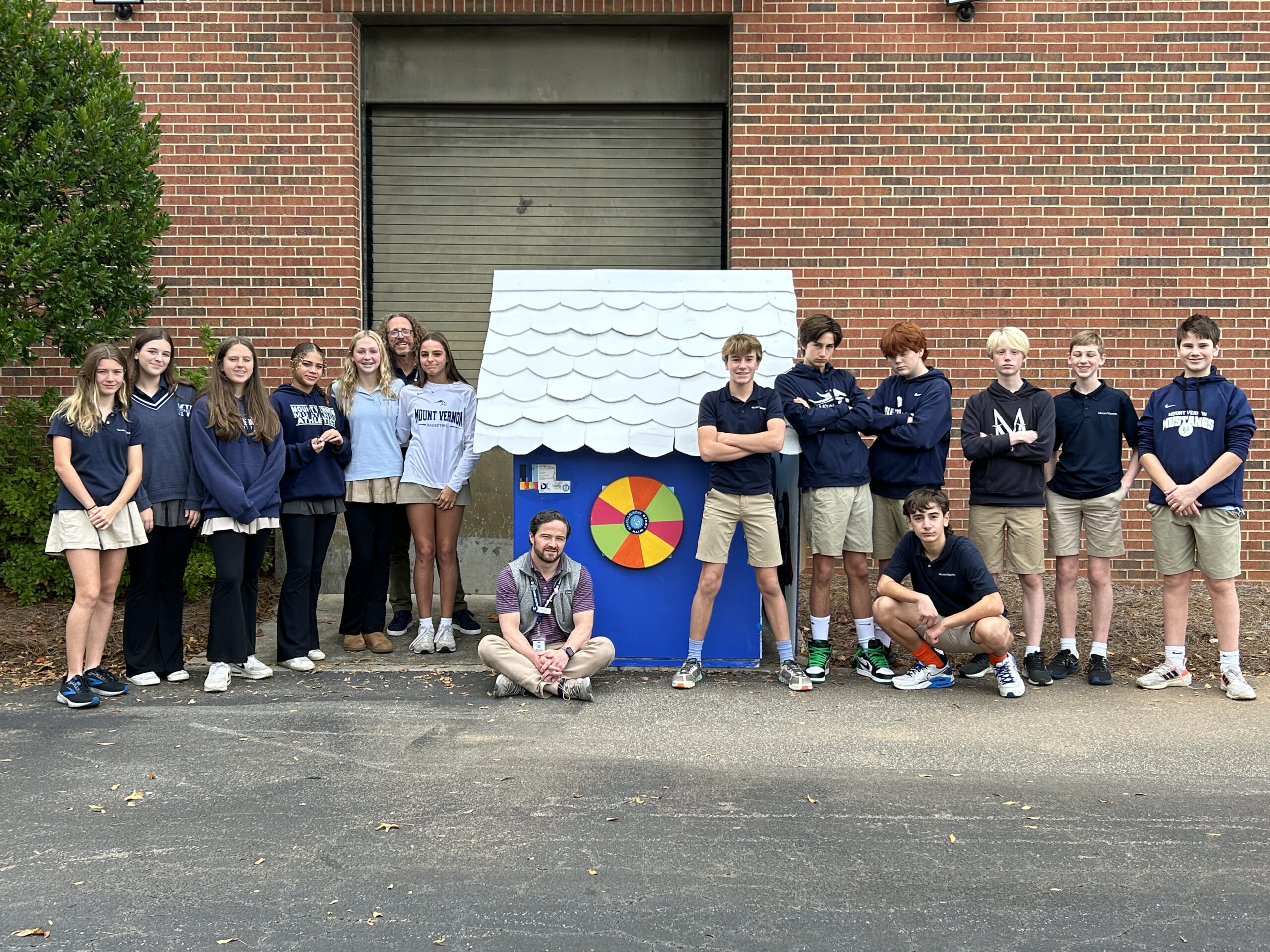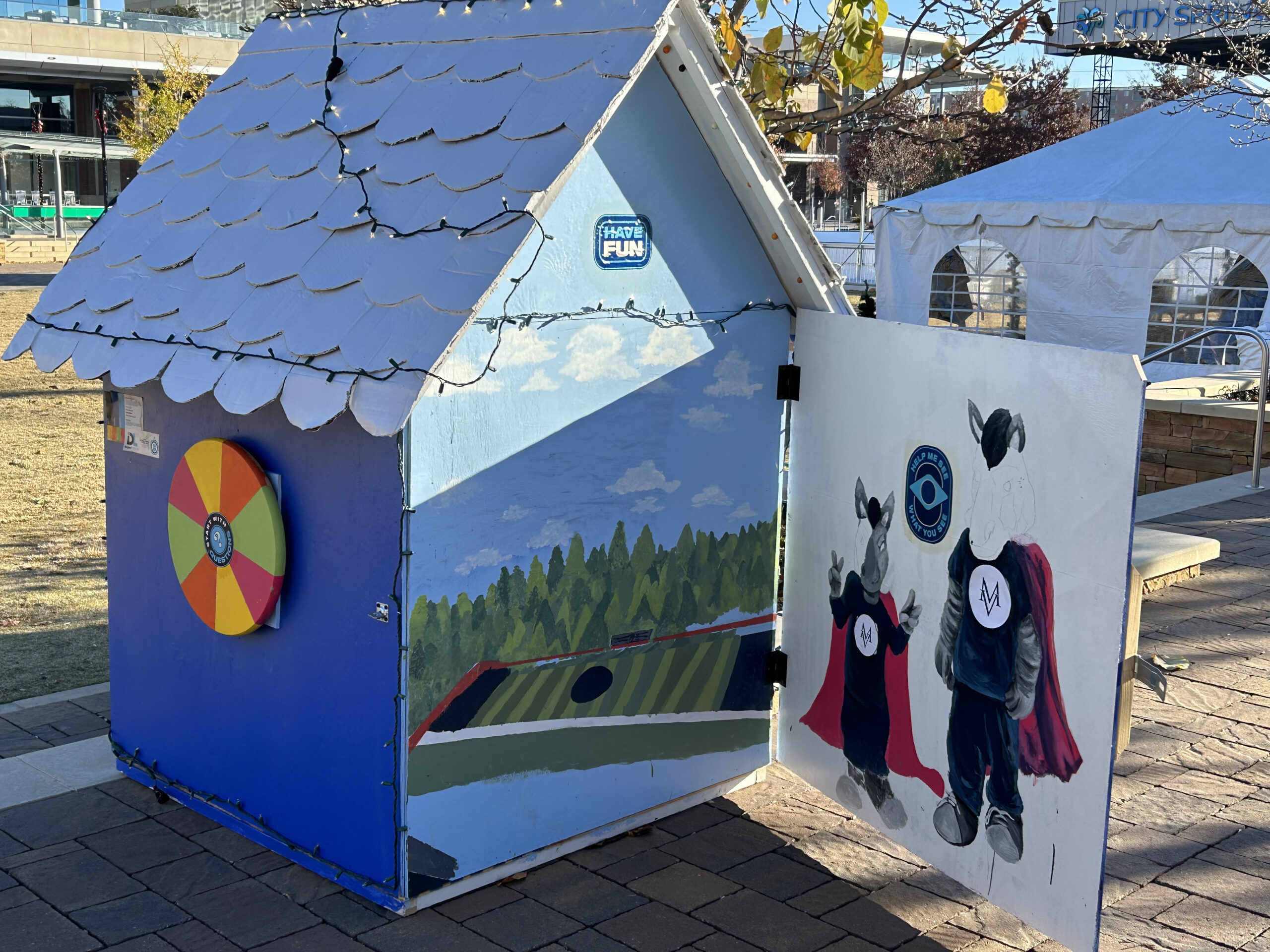For the past five years, The Mount Vernon School has been an active participant in the city of Sandy Springs’ Sparkle Village, a month-long display of miniature homes designed by local organizations. This unique project involves designing a house that not only captures the festive spirit of the holiday season but also reflects the distinctive features of each participant’s organization. The endeavor is a fun, yet challenging, undertaking that requires a host of literacies, skills, attributes, and relationships. This year, the responsibility and creativity was entrusted to Grade 8’s Impact Design Lab (iDL), bringing a new perspective and approach to the Mount Vernon Sparkle House project.
The Four D’s (Discover, Define, Design, and Deploy) Charted the Course
Dr. Todd Wass, one of the three iDL teachers (along with Mr. Ryan Welch and Mr. Kevin Day) explained, “Our goal for the Sparkle House was for students to lead the project and find an innovative and creative way to tell MV’s story.”
After reading the brief that the city gave to all Sparkle House participants, the students distilled it into design constraints using a Question Formulation Technique (QFT). Generating and organizing their questions about the project and making their thinking visible allowed their teachers to gauge their understanding of the design brief. Some of the design constraints and considerations identified included:
- The house will be outside for a month and needs to withstand winter weather conditions.
- The house should have a holiday theme in some way.
- The house should tell the story of the organization in some way.
- Only 20 organizations in the area get the opportunity to do this.
In addition to design constraints, the students identified the production timeline stretched and then became significantly truncated which can be reflective of a real-world challenge. “There was also the unique Middle School challenge of providing access to all 106 Grade 8 students during the 7 different iDL sections rotating through their alternating daily schedules” Mr. Welch explained.
Mr. Day elaborated, “In terms of the complexity of this design brief, the Sparkle House was much larger and much, much more challenging than anything Grade 8 had experienced in the past.”
Making Thinking Visible
The interview process during the Discovery Phase gave Grade 8 another lap at interviewing, taking notes, and developing insights. Using an empathy map to make their thinking visible, Grade 8 interviewed Susan Edwards, Upper School AP Art and Middle School Art teacher, who had led the School’s historical participation in the Sparkle House project with the arts and design team. They also captured insights from some Grade 5 students, who gave feedback on Mount Vernon’s previous Sparkle House creations, designs, and products.
Start with Questions
“How might we tell the story of what is happening here at Mount Vernon? How can we engage our students to help us tell the story through the Sparkle House, which will get that message to people who are walking in and around City Springs during the month of December?”
Working in groups, students prototyped and sketched ideas during the Design Phase. The students decided on a finalist group then narrowed and aligned on those ideas. To keep the project moving forward across the seven different sections, iDL students used a Kanban board and a two-month calendar posted on the walls of the Hive. This is the first time students used a Kanban board to assist in the project workflow.
“Our students want to deploy their ideas. They have told us again and again how important deploying into the real world is to them, whether it be Mustang Rally, Sparkle House, or other design briefs and challenges, deploying helps drive their engagement and the intensity in which they work, “ Dr. Wass explained.
Deploying and Shipping
To add an interactive element, the students built a latch enabling visitors to open a panel which would feature cut outs within a painted mural for a personalized photo opportunity. Mr. Day explained the scene in the Middle School on the day before the house needed to ship out. “It was the last day and the photo booth still needed to be painted. There was a group working on the field and there was a group working on Renegade. I just didn’t know how it was going to happen. I came around the corner and a couple of girls were just in the zone: Jocelyn Towns, Adeline Rice, and Gemma Hart.”
Learning Outcomes & Reflections
To make assessment clear, and more importantly, transferable for learners, Mr. Welch explained how IDL has developed two learning outcomes for each phase in the design thinking process (Discover, Define, Design, Deploy). The project was structured with a formative reflection and then the summative reflection so students can also think about what they learned about themselves during this project.
Their formative assessment was a reflection on their role in the process:
- How they felt like they added value
- How they felt like they could have done better
- What they learned and how it could be transferred to something else
Mr. Welch added , “From there, we asked these three questions:
- What did I learn about myself while working on the Sparkle House project?
- What did I learn about myself in the context of a group working on the Sparkle House project?
- What in particular can I transfer to future projects and tasks?”
By demonstrating their commitment to honest self-assessment, they aim to provide valuable insights for future opportunities. This iterative process is essential, especially considering that similar challenges will persist into the next semester, next year, college, career, life, etc. Examples of student insights ranged from simple:
“I learned how to paint.”I learned that paint gets everywhere and it’s hard to clean off.” To more complex, “ I just didn’t know how difficult it would be to get that thing finished.” and, “I didn’t know how difficult it would be to align around a plan.”
In wrapping up the Sparkle House 2023 project, it’s evident that this endeavor was more than just a holiday-themed construction. It served as a dynamic learning platform, demanding a diverse set of literacies, skills, attributes, and relationship-building. Beyond mastering the art of handling paint brushes, liquid nails, and caulk guns, students honed critical thinking, problem-solving, and innovation skills to bring a tangible, real-world product to the city of Sandy Springs.
The journey wasn’t just about the end result; it was an opportunity for self-reflection. Students delved into their process, evaluated the product, and explored their own growth. Next year there will be a new Sparkle House, but the lessons learned for this group of Grade 8 students will extend far beyond this holiday season.
